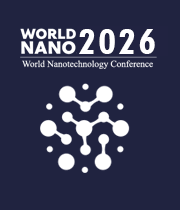Drug Design
Drug design is a multifaceted process that combines scientific knowledge, computational tools, and experimental techniques to create new medications with specific therapeutic effects. At its core, drug design involves understanding the molecular interactions between a target biomolecule and a potential drug candidate. The target biomolecule could be a protein, enzyme, or nucleic acid associated with a particular disease. In the initial stages of drug design, researchers identify a target biomolecule linked to a specific medical condition. Subsequent steps involve exploring the three-dimensional structure of the target, often determined through techniques like X-ray crystallography or nuclear magnetic resonance (NMR). With this structural information, computational methods come into play to predict and analyze potential interactions between the target and various chemical compounds.
The next crucial step is the synthesis and testing of these compounds in the laboratory. Medicinal chemists work to optimize the chemical structure of the compounds for enhanced efficacy, reduced side effects, and improved pharmacokinetics. This iterative process of designing, synthesizing, and testing continues until a promising drug candidate emerges. Advancements in technology, such as artificial intelligence and machine learning, have revolutionized drug design by accelerating the analysis of vast biological datasets and predicting potential drug-target interactions. These computational approaches significantly expedite the early stages of drug discovery.

Harry Ruda
University of Toronto, Canada
Raman Singh
Monash University, Australia
Paulo Cesar De Morais
Catholic University of Brasilia, Brazil
Xiao Hong Nancy Xu
Old Dominion University, United States
S V A R Sastry
Harcourt Butler Technical University, India
Vinayak Adimule
Angadi Institute of Technology and Management, India



Title : Nanomaterial-based bio-lubricant additives for improved efficiency and environmental sustainability in automotive applications
S V A R Sastry, Harcourt Butler Technical University, India
Title : Harnessing the unique properties of engineered nanostructures for sensing
Harry Ruda, University of Toronto, Canada
Title : Circumventing challenges in developing CVD graphene on steels for extraordinary and durable corrosion resistance
Raman Singh, Monash University, Australia
Title : 40,000 implants in humans and no failure: The impact of nanomedicine
Thomas J Webster, Hebei University of Technology, China
Title : Evaluating cytotoxicity of metal-doped tin oxide nanoparticles
Paulo Cesar De Morais, Catholic University of Brasilia, Brazil
Title : Lipid nanoparticles formulations: From bench scale to industrial scale
Mohammad A Obeid, RAK Medical and Health Sciences University, United Arab Emirates